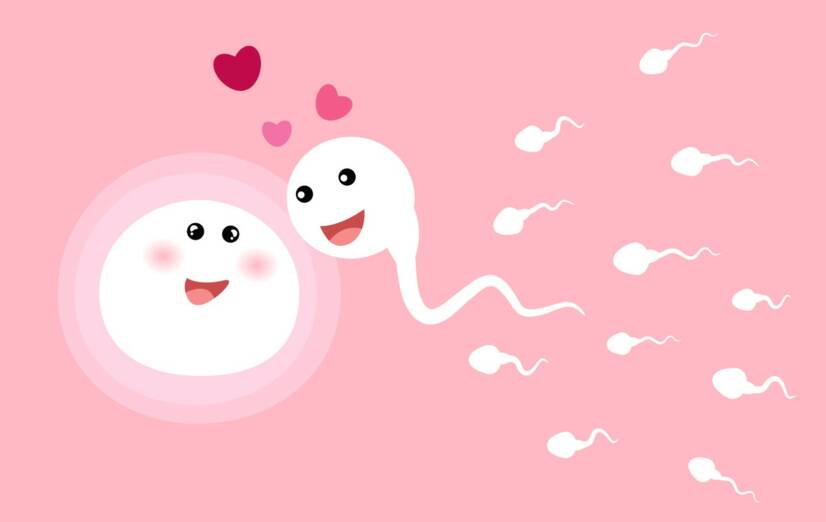- www.wikiskripta.eu - cyclical changes in the female body
- thebump.com
- mayoclinic.org
Week 2 of pregnancy: when does ovulation occur? + Fertilization

Pregnancy starts counting from the first day of your last period. Even if you haven't actually conceived yet, you're already counting.
Article content
2nd week of pregnancy:
Based on the start date of your last period, you are in the second week of pregnancy, even if you are not yet pregnant.
The actual fertilization will occur at the time of ovulation.
It will happen at the end of this week.
Your body is now preparing.
The uterine lining is growing and thickening so that the fertilized egg has somewhere to nest.
At the same time, an egg is maturing in the ovary, which will be released during ovulation and ready to be fertilized by sperm.
Ovulation
Ovulation is a regular and spontaneous process.
Ovulation occurs around the middle of the menstrual cycle.
The follicle ruptures and its fluid and the egg oozes out.
The ruptured follicle produces a corpus luteum which releases progesterone.
The hormone progesterone prepares the uterine lining to receive the egg.
The egg is then trapped by the fallopian tube and moved towards the uterus.
At the end of this week, you will signal to your partner that it is time to have a baby.
The necessary steps will be taken: you will have an unforgettable night, day, early evening and, for good measure, in the morning.
Orgasm increases the chances of fertilisation.
You can only get pregnant when the egg is ripe, which is about 12-24 hours.
This means that a woman is fertile a maximum of 12 times for 12 hours each in a year.
However, sperm can wait for their chance for up to 48 hours after intercourse.
To determine the most fertile period, three symptoms are important:
- basal temperature.
- cervical mucus
- changes in the cervix itself
For more detailed information about ovulation, see the following articles:
Ovulation, calculating fertile and infertile days, how to plan pregnancy
How does the ovulation test work, when to test, what confirms positivity
Painduring ovulation
Fertilization
Fertilization is the fusion of male and female sex cells.
When two cells, a female egg and a male sperm, fuse, new life can be created.
The fusion of the egg and sperm occurs in the wider part of the fallopian tube.
A single zygote cell is then formed, carrying 46 chromosomes of genetic information, equally from both parents.
Sperm
Sperm are male sex cells that reach approximately 50 μm (micrometers) in length in humans.
They consist of 2 main parts:
- The head is oval in shape and contains the genetic material needed to fertilize an egg.
It contains the substances needed for the sperm to penetrate the egg. - The flagellum ensures the movement of the sperm towards the egg, or the movement of sperm in general.
Did you know that:
- A healthy adult male produces up to 50 million sperm per day.
- It takes approximately 2-3 months for sperm to mature.
- The amount of ejaculate under normal circumstances is 2-6 milliliters.
- One milliliter has 20 to 120 million sperm in it.
- In order for a woman to be impregnated, the sperm must be introduced directly into the vagina.
The egg
An egg is a round-shaped female sex cell.
It develops in the ovaries from germ cells.
It is also sometimes called an egg cell or ovulum.
Did you know that:
- The size of an egg cell is approximately 0.1 mm.
- At the time of fetal development at 3 weeks, the woman's ovaries begin to form. At that time, they contain approximately 100 germ cells.
- During a woman's fertile lifetime, around 400 eggs may be released.
- One egg is released each month during ovulation.
- The lifespan of an egg is 12-24 hours after ovulation.
Zygote
A zygote is a primordial cell that is formed by the fusion of two sex cells - an egg and a sperm.
At that moment, a new life emerges from this single cell.
You know that:
- The zygote has a full chromosome count (46).
- It has all the hereditary information that your future child will have.
- Thus, in the first hours after fertilisation, some of the characteristics of your future offspring are already decided.
Within twenty hours, the cell divides into two, then four cells, called blastomeres (cells that result from the division of the zygote).
Intensive division (furrowing or striations) continues.
The miracle of new life has just begun!
Read:
How is an egg fertilized and how long does it take to nest?
Pregnancyby weeks: How does pregnancy and fetal development proceed?
Week 1of pregnancy: When does pregnancy begin?
Interesting resources
Related










